This site is a free online resource that strives to offer helpful content and comparison features to its visitors. Please be advised that the operator of this site accepts advertising compensation from certain companies that appear on the site, and such compensation impacts the location and order in which the companies (and/or their products) are presented, and in some cases may also impact the scoring that is assigned to them. The scoring that appears on this site is determined by the site operator in its sole discretion, and should NOT be relied upon for accuracy purposes. In fact, Company/product listings on this page DO NOT imply endorsement by the site operator. Except as expressly set forth in our Terms of Use, all representations and warranties regarding the information presented on this page are disclaimed. The information which appears on this site is subject to change at any time. More info
Canon EF 24-105mm f/4 L IS USM
First Step into Professional Photography
This lens is one of the most popular for the full-frame Canon DSLR cameras. And there are several valid reasons for this. At the focal length of 24-105mm, it can be used universally for many types of photography: portraits, urban scenery, nature landscapes, wildlife – just to name a few. As you already know, the focal length is not the only thing that has a prime effect on the image quality. Many zoom lenses have a particular habit when the diaphragm is getting narrower when you are zooming in. In this zoom lenses for Canon, the f-number is constant and stays at f/4 at any given moment. This is plain awesome as it provides the excellent light transmittance through the aperture allowing the faster shots. The image quality is improved even further with the light coming through the total of 18 elements divided into 13 groups that boast 3 aspheric lenses and one with the extra low-dispersed glass. This also reduces the chromatic aberrations on the edges of a filmed object. Furthermore, this Canon zoom lens also has a couple of standard switches for the stabilizer and for changing from auto to manual focus. By the way, the letter 'L' and thin red ring on the Canon lenses are indicating that it belongs to the company's Luxury series for professional photographers. Needless to say, the body assembly is top-notch. The insides are moisture and dustproof, making it possible to safely use the lens in the windy or rainy weathers. Additionally, we advise you to get a set or buy separate lens filters. For instance, UV lenses remove add additional clarity and contrast to the photos by filtering the refracted sun rays. As for ND filters, they will reduce the amount of light coming through the lens. For example, you can use them to emphasize an object's movement by setting the lower shutter speed and following it with a camera.
Undoubtedly, the 'L' in the name and the red strip on the barrel speak for itself. Owners of this professional Canon zoom lens can unlock the full potential of their DSLR camera even if they've had a little experience with the zoom lenses before.
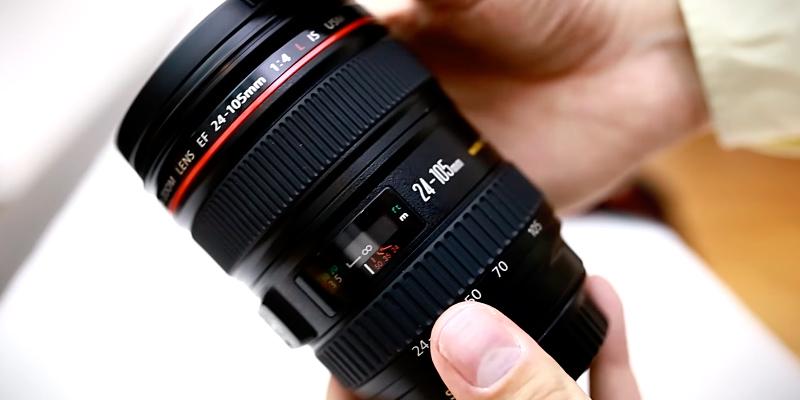
Additional Info
| Last updated price | $440.00 |
| Stock | In stock |
| ASIN | B000AZ57M6 |
What customers say about this product
Key Specs
Imaging
Size & Weight
Features
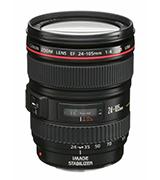
Tamron AF 70-300mm f/4.0-5.6 SP Di VC USD XLD
Keep an Eye on the Ball
This Tamron AF 70-300mm lens is fully compatible with Canon full-frame DSLR and the first lens by Tamron to feature the Ultrasonic Silent Drive - hence the USD letters in the name. While hunting, the AF mechanism works very quietly and is inaudible to many animals, including birds. Thanks to this feature, you can quietly get a lot of stunning shots just by having a little bird feeder next to your house so it could be seen from the window. Of course, buying it just for the bird hunting might be a little waste. It can be readily brought as the main lens on a sports event in order to get the best action shots right when the adrenaline kicks in and the rush begins. The 70-135mm focal range is also sufficient to get good-looking portraits with the nice, blurred backgrounds.
However, the high spot of this zoom lenses for Canon is the optic stabilization. At 100mm and bigger focal length, the zoom lenses for Canon become very sensitive to the vibration - even the smallest tremble can ruin the shot and smear the picture. However, this Tamron 70-300mm lens comes with the Vibration Compensation that does exactly what it says by slightly shifting lens groups to keep the image sharp and steady. The Full Time Manual Focus is worth mentioning as well. With it, you can manually adjust the focus at any given moment, even when the AF is on - extremely handy when it can't find the right target in the dim lighting or at the very shallow depths of field. The tradeoff, though, is that the lens is a bit heavy. This can be solved by mounting the camera on a tripod. Luckily, we have a review of the best camera tripod models on our site. So, check it out.
As a result, we can recommend Tamron zoom lenses for Canon to anyone who's looking for a versatile camera mount for nature or sports genres. The optical stabilization and the Full Time Manual Focus will also be of great help for both beginners and advanced photographers.
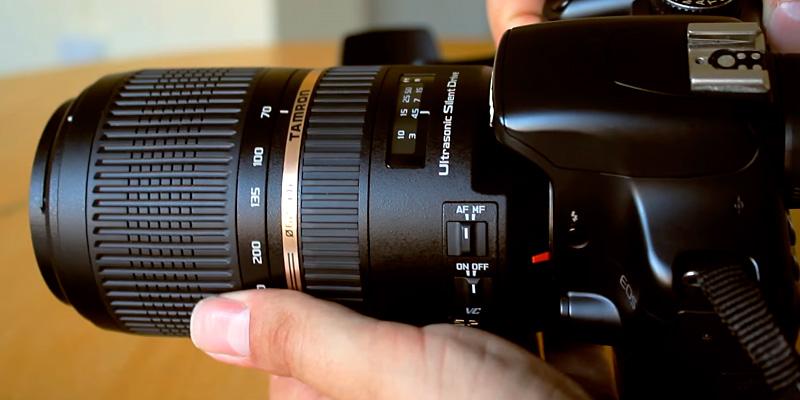
| Last updated price | $199.98 |
| Stock | In stock |
| ASIN | B003YH9DZ4 |
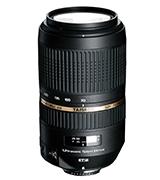
Canon EF-S 10-18mm f/4.5-5.6 IS STM
More Details
This Canon 10-18mm lens belongs to the wide-angle zoom lenses for Canon category. Note, this one is compatible with APS-C cameras only. Therefore, if you are a happy owner of a Full-Frame DSLR, please, check out some other great models from this review. Anyhow, this Canon EF-S 10-18mm is a very decent lens. For starters, it has ultra-wide 107° angle of view at 10mm, which is way ahead of the common 18-55mm zoom lenses. For reference, a human binocular vision has about 120° angle of view. Where can you use this lens? Well, while outdoors, you can usually come closer or get further away from to get a shot with a common lens. However, if you are standing in a room - there's usually nowhere to go. Then, the wide angle lens comes to the rescue. It is a perfect tool for the interior photography. Another good example is a scenery photography. For instance, when you want to capture really huge objects like a dam or a stadium but you are too close to get it all in with a 50mm lens.
While reviewing this lens, we've noticed that it's very quiet when it zooms in and out. If you also decide to record some videos, it'll do just fine because it has an optical image stabilizer. The AF seems to quickly get a hold of the object most of the times. Of course, you can switch to the manual focus any moment. The Canon's special Super Spectra glass coating effectively reduces the lens flares and aberrations. It is a good feature because you might often face the sun with a wide-angle lens.
We also want to point out that the barrel comes without a pouch. As the lens is pretty compact and extremely lightweight, you might want to get one. Take a look at our guide on the best camera bags, so that you could safely carry the lens on your travels, having it protected from the dust and moisture.
Either you are a realtor or just love taking panorama-like scenery shots, this wide-angle zoom lenses for Canon is exactly for you. Definitely, a good buy for improving your photography skills and imagination!
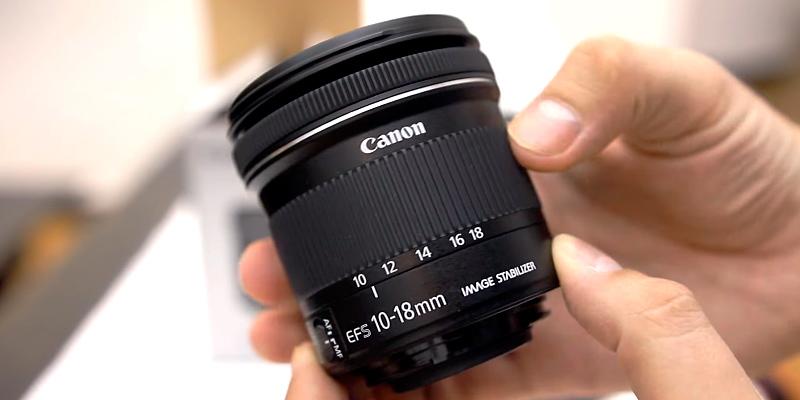
Additional Info
| Last updated price | $299.99 |
| Stock | In stock |
| ASIN | B00K899B9Y |
What customers say about this product
Key Specs
Size & Weight
Features
Imaging
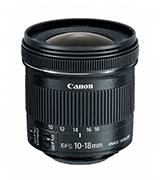
Sigma 17-50mm f/2.8 EX DC OS HSM FLD Large Aperture Standard
Alternative Solution
The Sigma 17-50mm zoom lens is designed for APS-C cameras only. It has a focal length similar to the lenses that you can often meet in a camera kit. However, the key feature here is the constant f/2.8 aperture that stays unchanged at any focus length. With such a wide open aperture, you are permitting more light to the sensor, making it a great lens to get the sharp images with less noise and artifacts, especially in a dim lighting.
Furthermore, the optic system consists of 17 elements in 13 groups. There are 2 pieces of low-dispersion glass and 2 aspheric ones to reduce the aberrations and improve overall image quality. The 'EX' letters on the Sigma products mean that it is the professional lens with the best possible body design. Thus, it is no wonder that this lens also has the Hyper Sonic Motor that moves the AF quickly and silently. As expected, it has an optical image stabilizer. Therefore, you can readily buy it if you want to take photos of the artists or the crowd at a concert or any other event, where the vibration from the loud noise may affect the picture quality. The barrel design is pretty standard. There are sliders to change from AF to manual and back, for locking the lens at 17mm focal length, and the last one is for stabilization.
Although Sigma zoom lenses for Canon comes with a carrying case, get yourself a camera backpack in order to keep your kit safe and sound on your travels. As a rule, they have several compartments and dividers inside for the lenses, camera, and some others accessories too.
All in all, this Sigma zoom lenses for Canon a perfect alternative to a standard lens that comes in a kit. Although it has a fixed aperture, it can be used universally for portraits, scenery or nature photography.
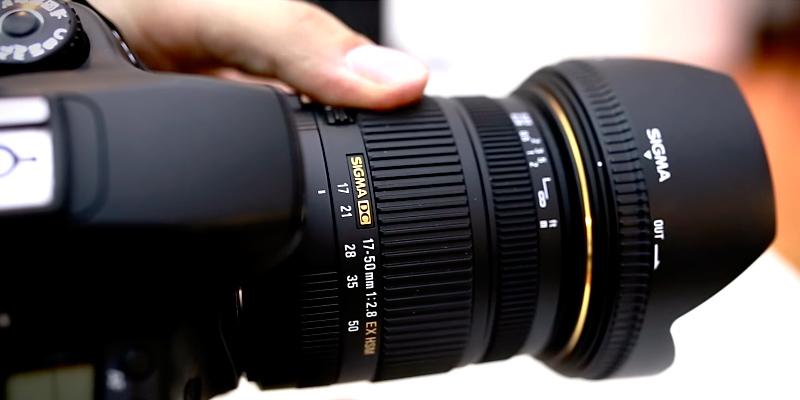
Additional Info
| Last updated price | $489.00 |
| Stock | May be out of stock |
| ASIN | B003A6H27K |
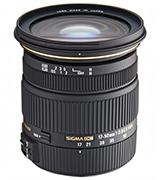
Canon EF-S 55-250mm F4-5.6 IS STM
Stay Focused
Canon EF-S 55-250mm F4-5.6 IS STM is a telephoto lens for APS-C format only. It is a great example of how the company can take already existing model and drastically improve it. The older model of this lens makes the mechanical loud noise when the telescopic part moves back and forth during focusing. In this zoom lenses for Canon, the Canon company has got this issue fixed by adding the new Stepping Motor drive. It makes the hunting very quiet in both manual and AF modes. Better yet, the lens boasts the image stabilizer that is helpful for both handheld photography and video recording, especially at the maximum magnification. Another pleasant surprise is the ability to adjust the focus manually in the AF mode - a crucial feature when you want to tune it just a bit to get a perfect shot. Furthermore, the glass has a Super Spectra coating that effectively reduces the aberrations.
In our opinion, although this zoom telephoto lens is just one grade below the professional 'L' series, it can be readily recommended for both amateurs and pros equally, due to the built-in optical stabilizer, noiseless autofocus, and the good magnification ratio.
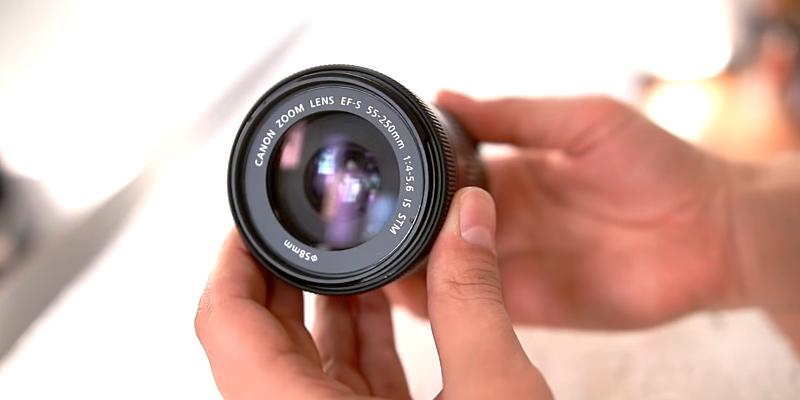
Additional Info
| Last updated price | $299.00 |
| Stock | In stock |
| ASIN | B00EFILVQU |
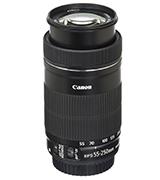
What is a Zoom Lens For Canon
Whether you already own a Canon DSLR camera or just planning to buy one, you should consider buying a zoom lens for the variety of good reasons. For starters, there are two main lens types out there: zoom and prime. You can also often find them called telephoto and fixed lenses accordingly. Simply put, a lens from the first category can zoom an image in and out before taking a shot by adjusting the focal length in a set range, whereas the prime lens has a fixed focal length and, therefore, an unchanged magnification ratio. Another plus of a zoom type is that one lens can replace several prime lenses in your collection at once. You can use most telephoto lenses universally for shooting portraits, wildlife nature, action sports, scenery - the list may go on and on. Of course, there are some lenses with the adjustable focal length that have more limited use in photography like wide-angle or superzoom.
That is why we have analyzed a lot of them and picked up 5 best zoom lenses for Canon cameras to satisfy different needs. If you want to learn more about the other lens types, take a glance at our reviews of the best fisheye lenses for Canon and the best macro lenses for Canon as well.
What Features to Compare
At first, take a look at Camera Sensor Type Compatibility. Some lenses are compatible with both full-frame and the APS-C cameras. Yet, there are lenses that can work with only APS-C types.
Focal Length is the most important characteristic to check out in any lens. It is shown as a range of numbers like 24-105mm, 60-300mm and so on. These numbers indicate the minimum and the maximum distance between the camera matrix sensor and the optical center of the lens where the light rays are collected together in the lens. In essence, the lower the number is, the wider the viewing angle of a camera will be. Conversely, at the bigger focal length, the viewing angle gets narrower. Then, the image is spread on the camera matrix that has a constant size. That is why, at the higher focal length, the objects appear magnified on the photo. In other words, at the lower focal numbers you get to see a wider picture; at the bigger values - a more concentrated, magnified one.
F-number is an important value for any lens. It's given as the f/x where the 'x' is the ratio of the focal length to the entrance pupil diameter. Basically, the lower this number is, the wider the aperture is and the more light will come through it. For example, at f/2.8 the image will appear brighter than at f/4.0. The wide aperture also allows you to set the lower exposure. On the other hand, the wide aperture has the shallower depth of the field - the range at which the objects appear to be in focus. This is helpful for emphasizing one objects on the photo by blurring the others, but not for showing a bigger picture with more things in focus. We've mentioned before, that some zoom lenses for Canon may switch automatically to the narrower aperture when you are zooming in. This makes the image dimmer and can be compensated by longer exposures. Sadly, that makes it easier to ruin a shot by a slight vibration or when shooting the fast moving objects. That is why you might want to check out the lenses with a constant F-number that will show the same bright picture at any magnification ratio.
There are some other Useful Features to check out. Optic Image Stabilizer is a must, because along with the image, a zoom lens also magnifies any distortion from vibration. Note the Weight of a lens as well. Some models can be so heavy that getting a stable shot in a handheld position would be almost impossible. That is why, if you see the 2 lenses with the same optic specs, get the one that weighs less. The lens with a Special Coating Glass will provide you with a sharper picture and reduce chromatic aberrations and lens flares.
Sources:
1. How to Buy Lenses for Your Digital SLR, wikiHow.
2. Jo Plumridge How to Choose the Best Lenses for Your DSLR Camera, Shutterstock. January 22, 2015.
3. Todd Vorenkamp Why You Should Go Beyond the Kit Lens, B&H. 2015.
4. David Elrich How to Pick the Perfect Camera Lens, Digital Trends. July 11, 2016.
5. Noam Kroll Here’s How to Choose the Right Lens, IndieWire. Jan 27, 2014.
6. Choosing a Lens: camera lenses explained, What Digital Camera. September 24, 2015.
7. Joshua Dunlop What do the Numbers and Letters on Lenses Mean?, Expert Photography.
8. Jim Goldstein 10 Tips For Great Telephoto Photography, Digital Photography School.
Popular Comparisons






























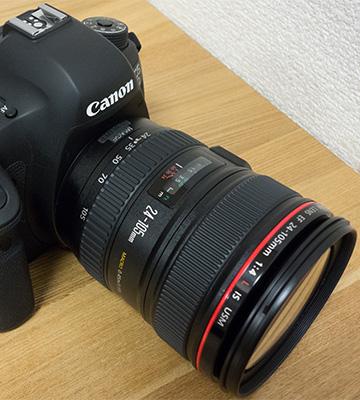
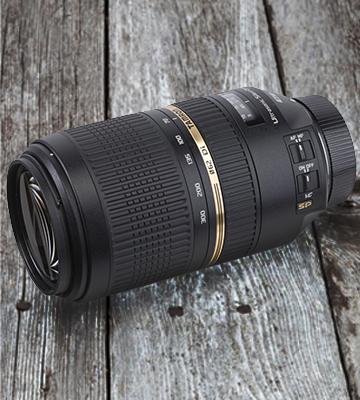
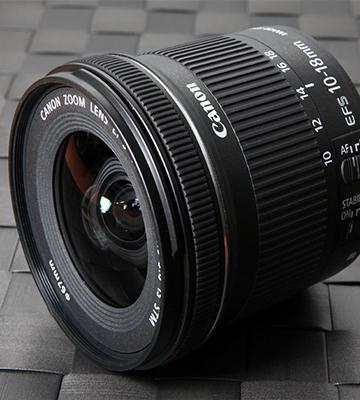
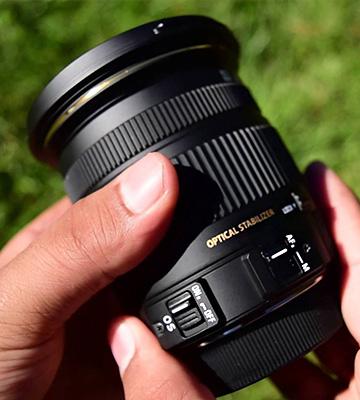
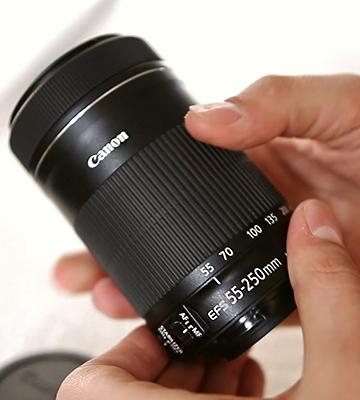
Your comment was successfully sent
Error! Please try again later